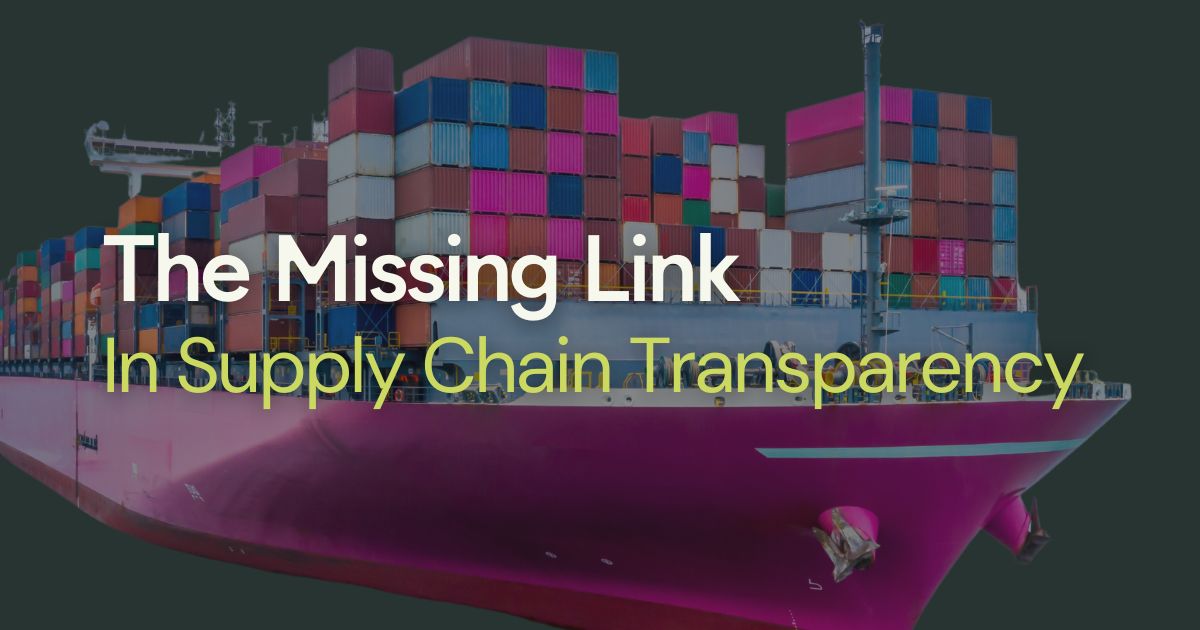 Today, transparency is not just a matter of ethics - it’s a business imperative. As regulations tighten and consumers demand proof, fashion must bridge the gap between promise and proof.
Today, transparency is not just a matter of ethics - it’s a business imperative. As regulations tighten and consumers demand proof, fashion must bridge the gap between promise and proof.
Why Supply Chain Transparency Is The New Sustainability Standard
Fashion’s environmental footprint starts long before a garment hits the shelves. Over 70% of emissions originate from upstream supply chain activities, particularly in textile production and dyeing (GlobalFashionAgenda, 2018). Yet, these critical stages often remain hidden from public view.
This lack of visibility is the missing link in supply chain transparency, making it nearly impossible for brands to confidently report on sustainability metrics or meet upcoming regulatory requirements. It’s no surprise that 63% of fashion brands are behind on their 2030 sustainability targets (TheBusinessFashion, 2024), with many delaying or diluting their net-zero goals.
New Regulations Are Exposing The Missing Link
Governments are taking aim at greenwashing and vague sustainability claims. The EU’s Digital Product Passport (DPP) and Extended Producer Responsibility (EPR) laws are turning transparency from a “nice-to-have” into a legal requirement.
The DPP will require fashion brands to disclose key product information such as durability, carbon footprint, and traceability, backed by scannable QR codes. Meanwhile, EPR legislation is shifting the financial burden of textile waste from taxpayers to producers. By 2026, the destruction of unsold stock will be banned across the EU.
These changes are designed to eliminate the missing link in supply chain transparency, ensuring that every step, from fibre to finish, is documented, verified, and disclosed.
Circularity Can’t Work Without Visibility
Circular fashion is on the rise, with brands beginning to track their supplier emissions and waste through the Higg Facility Environmental Module (Higg FEM) platform, and setting durability goals to extend garment lifespans. One of Alchemie’s investors, H&M, is also making major investments in textile recycling, laying the groundwork for a regenerative system.
However, without traceability, circularity is just a concept. For circular supply chains to function, brands must understand and measure every stage of a garment’s life cycle. That means closing the missing link in supply chain transparency - from fibre sourcing to dye application to factory waste streams.
And this is exactly where innovation must lead.
Solving The Transparency Challenge At The Source
At Alchemie Technology, we believe that the road to sustainability starts with solving the missing link in supply chain transparency. Our digital dyeing technology doesn’t just reduce environmental impact - it generates sustainable, low-cost production.
By digitally dyeing fabrics with up to 95% less water, 85% less energy, and 30% fewer chemicals, our systems allow brands to decarbonise textile production at scale, while capturing every data point in the process.
With Alchemie, sustainability is not an afterthought. It’s embedded into the fabric of production.

Call To Action: Build Trust Through Innovation And Traceability
The fashion industry has come a long way in acknowledging its environmental impact. But acknowledgement is no longer enough. It’s time to address the missing link in supply chain transparency by investing in infrastructure and innovations that make sustainability tangible, traceable, and scalable.
We invite brands, retailers, and supply chain leaders to partner with Alchemie Technology - to not only meet regulatory demands, but to lead with integrity, prove their impact, and empower consumers with the truth behind their clothing.
Connect with Alchemie today to learn how our digital dyeing solutions can help your brand close the transparency gap and deliver verified sustainability at scale.
Let’s turn the missing link in supply chain transparency into the foundation for a cleaner, smarter, and more trusted fashion industry. Contact us today: enquiries@alchemietechnology.com.